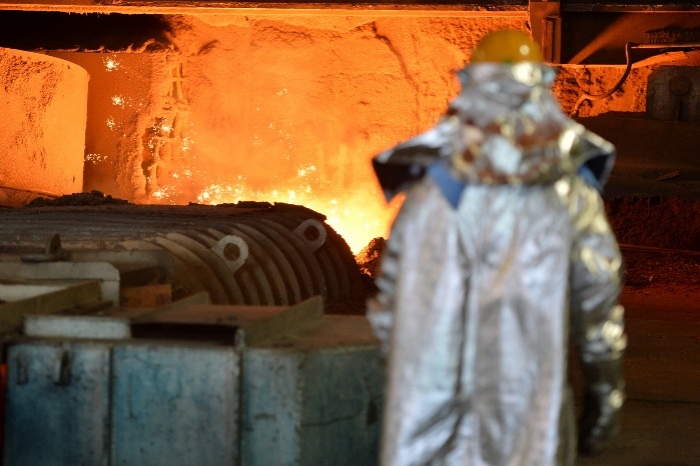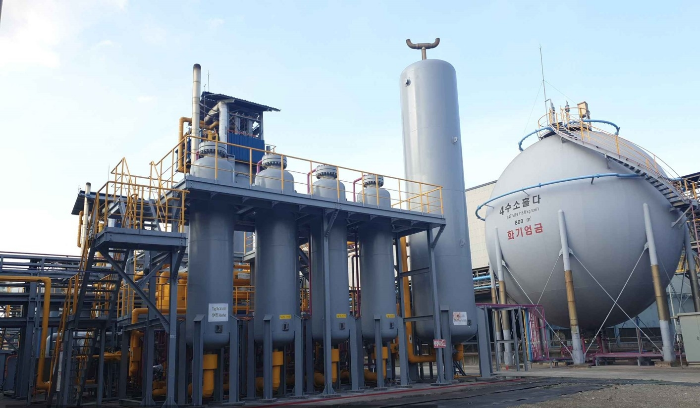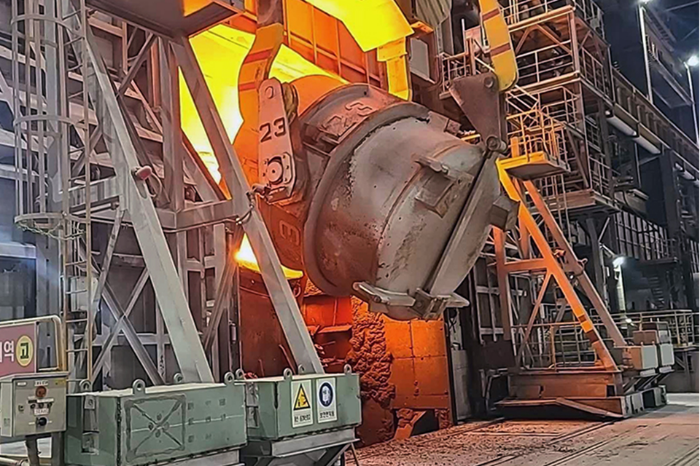Steel
POSCO readies for leap to carbon-neutral steel
The cost of transforming to a hydrogen-powered steelmaking process is estimated at up to $30 billion
By May 30, 2023 (Gmt+09:00)
3
Min read
Most Read
LG Chem to sell water filter business to Glenwood PE for $692 million


KT&G eyes overseas M&A after rejecting activist fund's offer


Kyobo Life poised to buy Japan’s SBI Group-owned savings bank


StockX in merger talks with Naver’s online reseller Kream


Meritz backs half of ex-manager’s $210 mn hedge fund



South Korea’s POSCO Group is preparing to produce carbon-neutral steel, using hydrogen instead of fossil fuels such as coal and natural gas, which the company expects to reduce carbon emissions by up to 90%.
Next year, it will break ground on a pilot facility for hydrogen-based steelmaking with an annual capacity of 300,000 tons at its Pohang steel complex in North Gyeongsang Province.
Scheduled for completion in 2026, it will begin the test production of low-carbon steel.
POSCO said the pilot plant will be the world’s first of its kind to use fluidized bed reduction reactors (HyREX) and widen its gap with rival steelmakers. It aims to reach carbon neutrality by 2050.
It draws a distinction from the shaft furnace-based steelmaking process, on which Sweden’s SSAB, ArcelorMittal and Japan's Nippon Steel are developing green steel technologies.
In 2031, POSCO will break ground on full-scale hydrogen-based steelmaking plants on landfills near the Pohang steel complex.
Then it will begin the construction of similar facilities in its Gwangyang steel complex in South Jeolla Province in 2032.

The steel industry is a major contributor to carbon dioxide emissions. CO2 is generated during the process of burning iron ore with coal to produce steel.
Hydrogen is the only alternative to cut CO2 emissions to zero in the steel manufacturing process.
Like coal or natural gas, hydrogen plays the role of a reducing agent that removes oxygen from iron ore. But it emits water instead of carbon dioxide from blast furnaces.
The European Union is introducing the Caron Border Adjustment Mechanism to put a fair price on the carbon emitted during the production of carbon-intensive products from 2026.
But the cost of building hydrogen-based steelmaking plants, estimated at several billions of dollars, is the big hurdle to the industry’s move toward green steel technology.
SSAB is ahead of other steelmakers in developing hydrogen-fueled steel. It plans to bring a demonstration hydrogen steel plant into production from 2026.
ArcelorMittal is working on the design of a similar demonstration plant. Both companies are aiming to build large carbon-free steel plants by 2030.
By comparison, Nippon Steel injects natural gas and hydrogen into a shaft furnace.

POSCO’s fluidized bed reduction reactor is based on its original fine iron ore reduction technology.
It produces direct reduced iron (DRI) by combining iron ore fines and hydrogen.
Then DRI melts into rusty water in an electric furnace.
This process will likely slash carbon emissions by up to 90%, compared to the conventional steelmaking process.
By comparison, shaft furnaces use iron ore pellets, instead of iron ore fines and generate more carbon dioxide when iron ore is processed into pellets, according to POSCO.
A POSCO official said other global steelmakers are either in the experimental stages for the hydrogen-fueled steelmaking technology or using the mix of hydrogen and other fossil fuels to power furnaces.
The cost of transforming to hydrogen-based steel production is estimated at up to 40 trillion won ($30 billion), including sunk costs for blast furnaces and investments, according to the company.
(The second paragraph from the top was corrected to say the groundbreaking will take place next year, not next month.)
Write to Hyung-Kyu Kang and Mi-Sun Kang at khk@hankyung.com
Yeonhee Kim edited this article.
More to Read
-
 SteelPOSCO, JSW discuss eco-friendly reduction steel production
SteelPOSCO, JSW discuss eco-friendly reduction steel productionMay 23, 2023 (Gmt+09:00)
1 Min read -
 SteelPOSCO to supply steel to Samsung Electronics under long-term contract
SteelPOSCO to supply steel to Samsung Electronics under long-term contractApr 25, 2023 (Gmt+09:00)
2 Min read -
 Hydrogen economyPOSCO to transfer hydrogen steel tech to industry peers for shared growth
Hydrogen economyPOSCO to transfer hydrogen steel tech to industry peers for shared growthOct 07, 2021 (Gmt+09:00)
2 Min read
Comment 0
LOG IN


